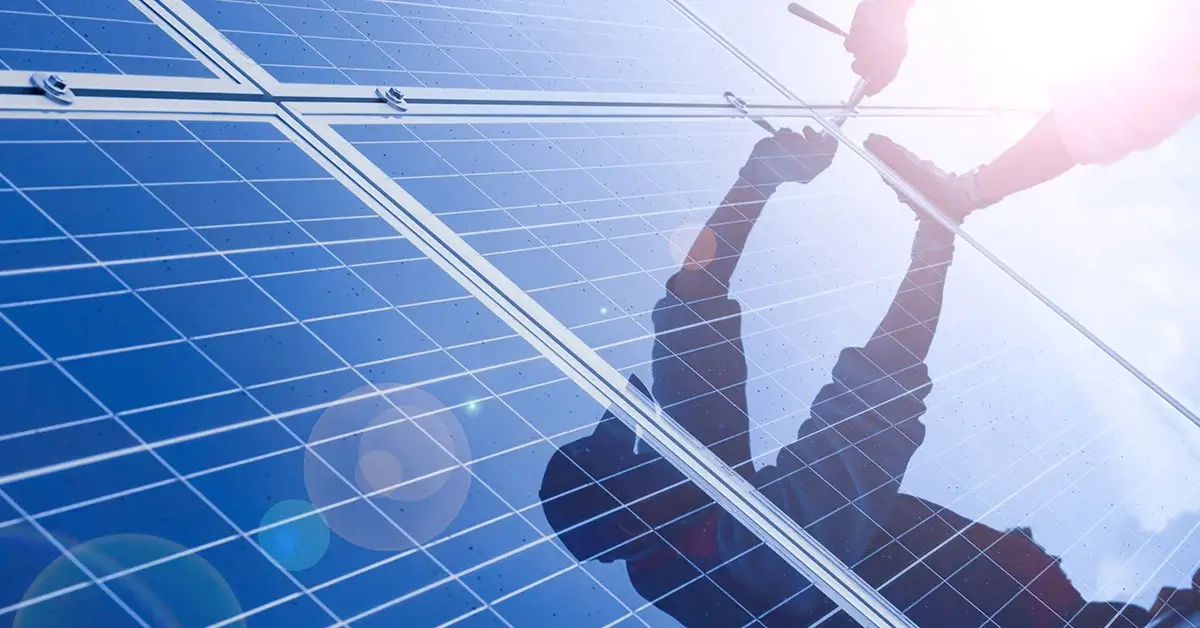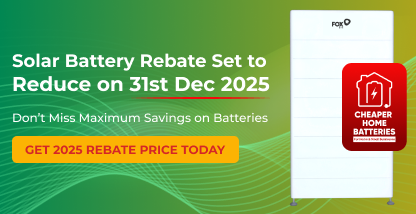ENTER YOUR POSTCODE TO UNLOCK SPECIAL

Choosing the best solar panels in Australia is a difficult task. Even more so if you’re not familiar with the technology behind what you’re buying. As with most products, they come in many shapes and sizes, so it helps to understand the different varieties of solar panels out there.
Generally, you’ve got a few choices to make when choosing your solar panel installation. The first is deciding between monocrystalline vs polycrystalline silicon solar panels. Then, you choose between n-type and p-type solar panels. If that sounds like a lot of big words and jargon, it probably is. But it’s also extremely important when deciding on that age-old question of cost vs efficiency.
So, what is the difference between N-Type and P-Type Solar Panels? Let’s take a deeper look into solar panels, and what the differences mean for you. Starting with Monocrystalline vs Polycrystalline solar panels.
Firstly, let’s talk about the first choice of monocrystalline vs polycrystalline. All solar cells are made of silicon, however, the type of silicon varies. One of those is monocrystalline silicon, which is known to be more efficient. Polycrystalline silicon on the other hand is cheaper to make, but less efficient.
Interestingly, while monocrystalline cells are the most efficient, they can suffer more if the solar panel is partially covered by shade or dirt. On the flipside, polycrystalline cells have a lower heat tolerance and also don’t last as long when comparing monocrystalline vs polycrystalline solar panels.
For the most part, neither is more popular than the other. People who want the highest quality and can afford to pay a bit more opt for monocrystalline. But polycrystalline still does the job, and many people prefer the cheaper option when deciding between monocrystalline vs polycrystalline.
A P-type solar cell is built on a positively charged silicon base. We should note that the raw silicon material is the same for n-type and p-type solar panels. The silicon is turned into a wafer which forms the basis of the solar cell. In a p-type solar cell, the base of that wafer is coated (or doped) with boron. Boron has one less electron than silicon, meaning the base is positively charged and attracts negatively charged electrons to it.
The top of the wafer is doped with phosphorous, which has one more electron than silicon. In this way, you have the positive/negative junction that allows the flow of electricity through the cell.
In simple terms, the n-type solar panels are made the opposite way. The negative doped phosphorous side forms the base of the cell, and the boron-doped side is on top. This means the base is negatively charged, and electrons flow from the base to the top.
You may be wondering how they are different, considering the same materials are used for both. We’ll explain the differences as we go on because the positively and negatively charged bases do result in a different product.
When solar cells were first invented back in 1954, it was an n-type design. While efficiency continued to increase, the development of the p-type solar cell began taking over. This was because primarily, solar technology was used on space-related equipment. We weren’t yet seeing solar panels popping up all over homes, because the technology was too expensive.
When being used for space applications, it turned out that p-type solar cells had better resistance to radiations and degradation. So, it became the more popular design and this is what filtered down into the residential market many years later.
Overall, it’s widely acknowledged that n-type solar panels are more efficient. This is due to a number of factors, but mostly the fact that the phosphorous doping on n-type panels offers protection against Light Induced Degradation (LID), which we’ll touch on shortly. In essence, the energy output from both types is much the same, but LID is a major contributing factor to efficiency.
The other factor at play is something called the boron-oxygen defect. We won’t go into the full science, but it’s a problem that isn’t present in n-type solar cells. It does, however, decrease the efficiency of p-type solar cells.
The problem is, p-type solar panels have become cheaper to make, which means they retail at a lower cost. That also means they’ve been the most common for decades. However, due to the increased efficiency in n-type solar panels, we can expect to see more of them on the market in future.
Light Induced Degradation (LID) is something that occurs very early in the working life of a solar panel. It takes place over the first hours, days and weeks after a solar panel is installed. The degradation in efficiency can result in anywhere between a 1-3% decrease. N-type panels are immune from this issue, while p-type panels, unfortunately, suffer from it.
LID occurs when the solar panels are first used, and the panels never recover. So, if you have p-type solar panels boasting 19% efficiency, the real efficiency is less after a couple of weeks.
P-type solar panels are cheaper to make, and therefore retail at a lower price. It does seem strange because both types use similar materials. However, as mentioned before, p-type cells became more popular and therefore manufacturing became cheaper. When it comes to monocrystalline vs polycrystalline solar panels, polycrystalline is cheaper.
It’s crucial to consider all angles when determining which type is the ‘best’ solar panel. Because the best for you may not be best for your next-door neighbour. Everybody’s needs are different. In most cases, it comes down to budget concerns. N-type solar panels are more efficient, longer-lasting and generally a higher quality option. However, not everyone can afford that.
P-type solar panels still work, and they’re cheaper. So, it’s not a total loss, but if you can afford the better product, it makes sense to go with n-type panels. For the LID factor alone, when you consider the panels are responsible for powering your entire home, you ideally want the best.
For the very best in solar panels in Australia, contact the friendly team at Captain Green today on 1800 361 682. We provide solar panel installation solutions to suit every budget and every property.

Captain Green Solar is one of the Top Solar Companies in Australia. Established in 2010, we are the Trusted Name in Solar for over 14 Years!

Captain Green Solar is one of the Top Solar Companies in Australia. Established in 2010, we are the Trusted Name in Solar for over 14 Years!

Solar Battery Rebate Set to Reduce on 31st Dec 2025
Don’t Miss Maximum Savings on Batteries
Time left until rebate reduces

